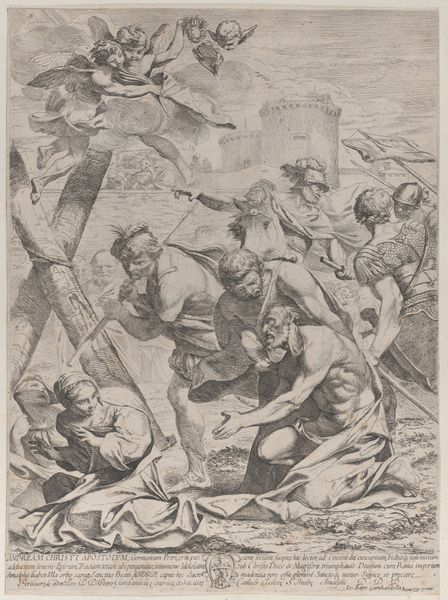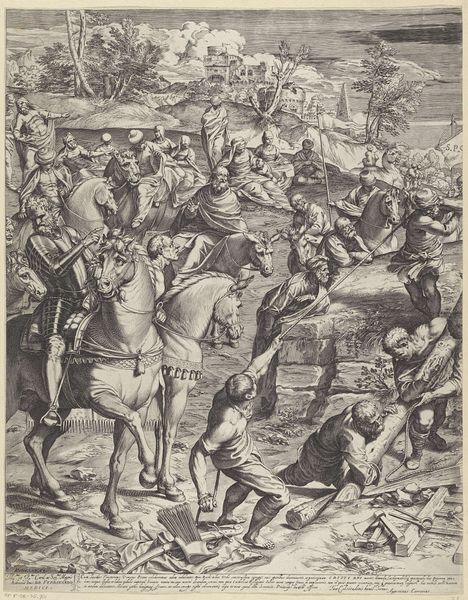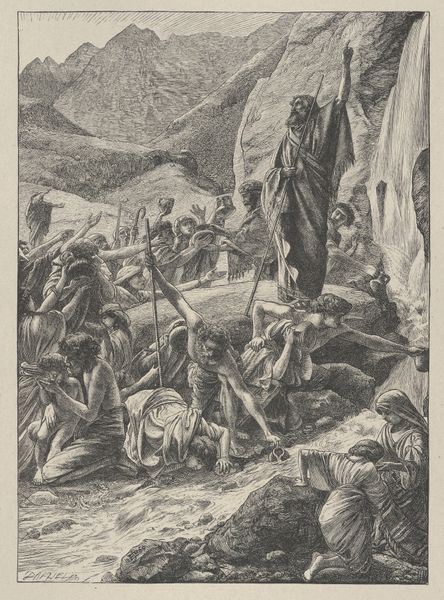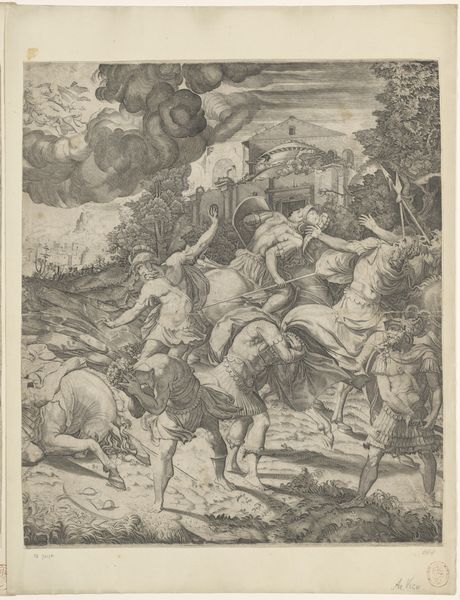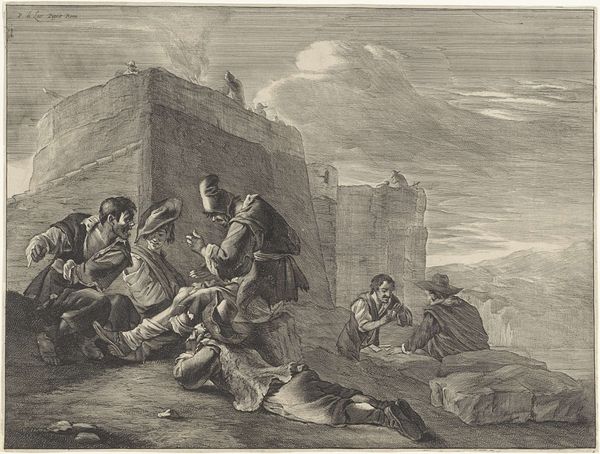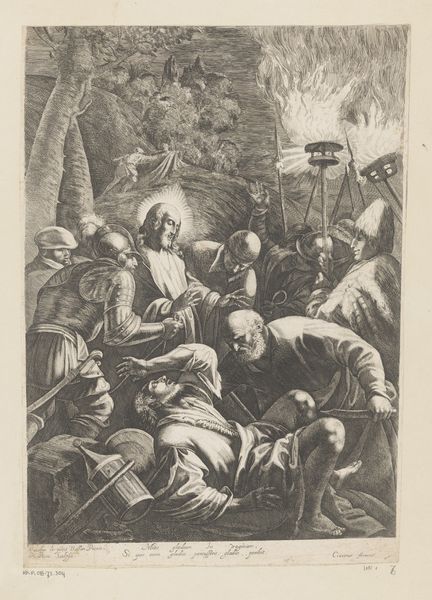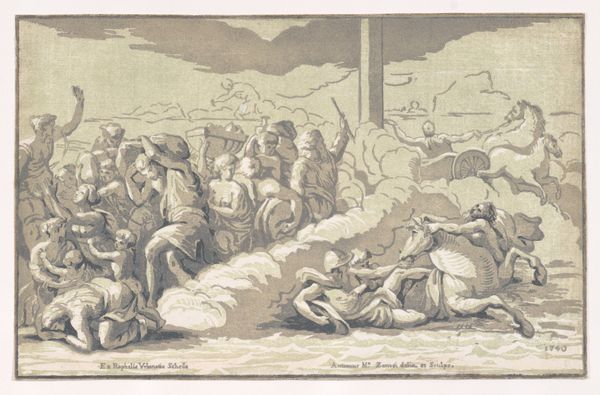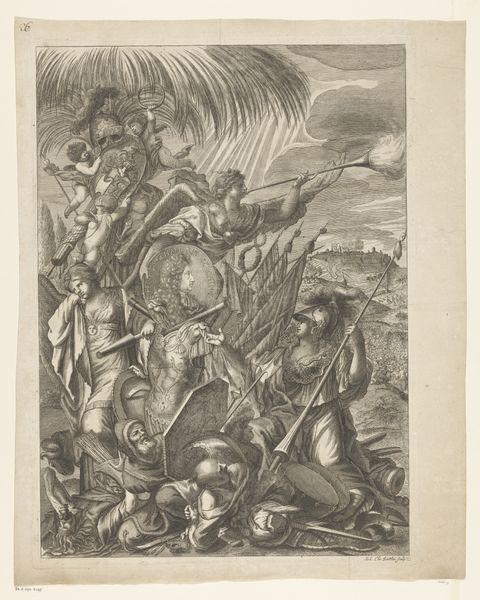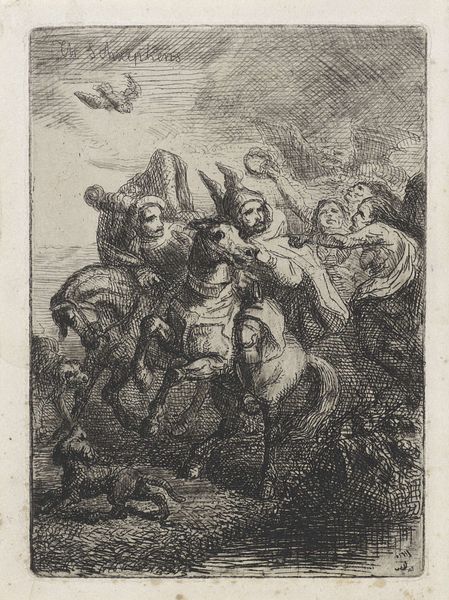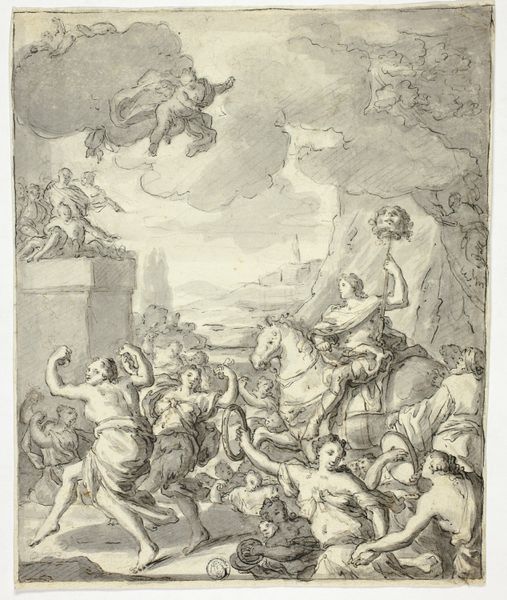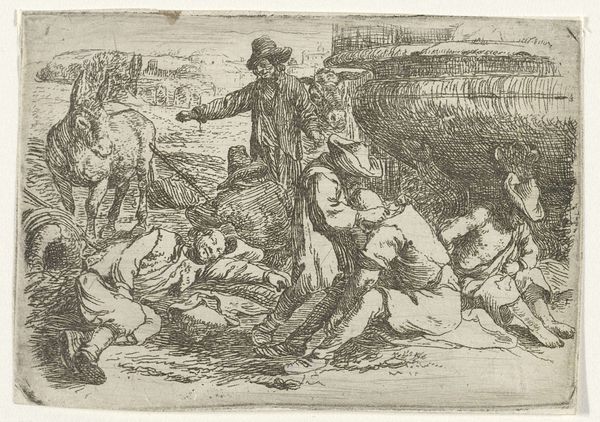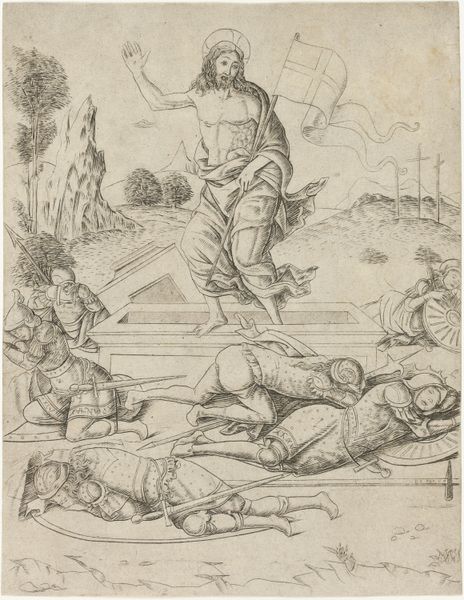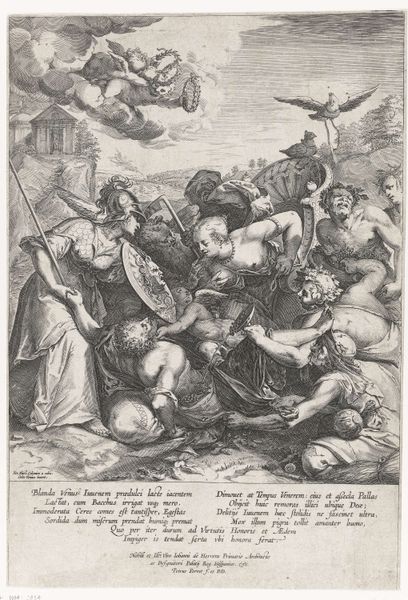
print, engraving
#
baroque
# print
#
figuration
#
history-painting
#
engraving
Dimensions: height 394 mm, width 297 mm
Copyright: Rijks Museum: Open Domain
Curator: Here we have "The Martyrdom of Saint Andrew," an engraving dating roughly from 1621 to 1669, attributed to Francesco Giovane. It is currently held at the Rijksmuseum. Editor: It strikes me as so bleak, and somehow energetic, even chaotic. Like a storm of human forms rendered in this stark monochrome. Are they about to crucify someone? Curator: Indeed. The composition focuses on the moment Saint Andrew is about to be crucified. Notice how the figures are arranged dynamically around him, some actively participating in his martyrdom, others recoiling in distress. See how the artist has paid careful attention to musculature and dramatic gesture, hallmark features of the Baroque style. Editor: Baroque, yes. The dynamism is definitely there, like the artist just unleashed the scene right in front of us! But those angels, carrying the wreath? Are they redeeming the cruelty of the scene, like hope fluttering down from the heavens? It's almost a surreal juxtaposition. Curator: From a formal perspective, the upper and lower registers operate quite independently. The angels introduce an ethereal, celestial element. Semiotically, the wreath serves as a clear symbol of sainthood, framing the earthly brutality within a narrative of spiritual triumph. Notice the orthogonal lines established by the cross itself: this gives a focal point and offers structural grounding to an otherwise complex arrangement. Editor: Wow. Orthogonal. That feels right, grounding. For me, there’s also a curious detachment between the violence occurring and the somewhat serene background architecture. I get a distinct feeling that what is unfolding is meant to reflect a set of historical or legendary happenings – it’s as if it takes place in another world or time, far removed from me, and yet here are humans just like myself. Curator: Quite astute. Francesco Giovane masterfully manipulates contrast and line weight. He uses light to guide the viewer’s eye, further intensifying the emotional impact. The very nature of printmaking contributes to the distribution of his art – creating a sense of enduring significance far beyond the depicted moment. Editor: So the medium reinforces the message? A kind of designed immortality... Clever. Seeing all that energy caught, now calmed within these precise lines... It is actually inspiring, that persistence. I feel calmer, now... Curator: Yes, quite. And if we consider structuralist thought, it also highlights themes of sacrifice, faith, and redemption prevalent in 17th-century religious art. A narrative made indelible by its replication and artistic interpretation.
Comments
No comments
Be the first to comment and join the conversation on the ultimate creative platform.
